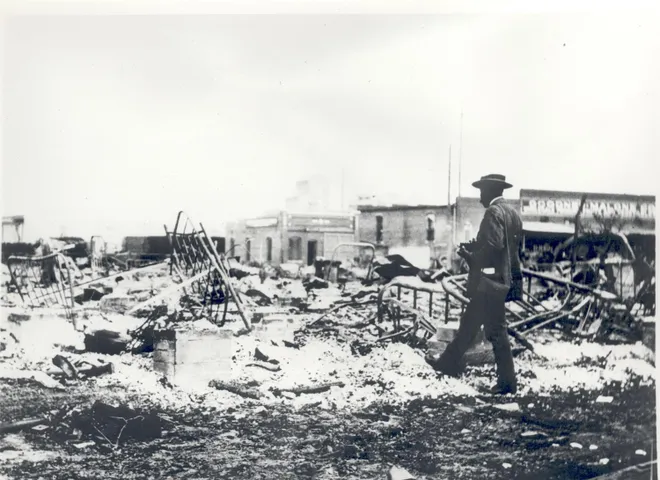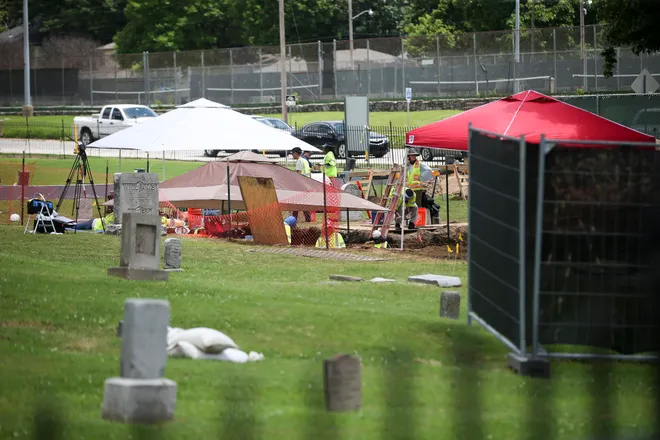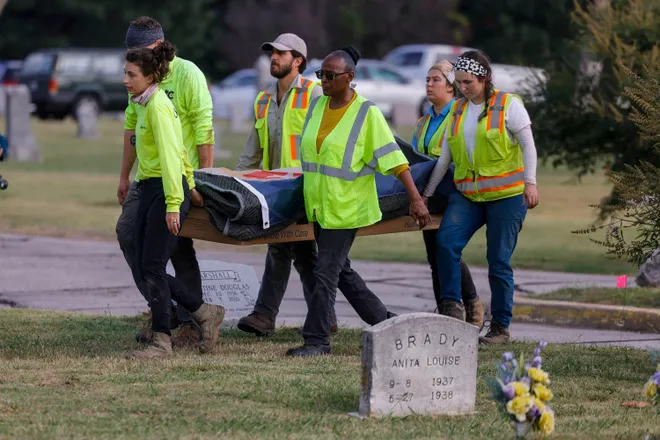First victim of Tulsa Race Massacre identified through DNA as WWI veteran
Archeologists have identified the first of dozens of 1921 Tulsa Race Massacre victims exhumed from mass graves at Oaklawn Cemetery through DNA genealogy, city officials announced Friday.
C.L. Daniel was a Black man in his 20s and a World War I U.S. Army Veteran, the city of Tulsa said in a release.
It's the first identification made since the city started this phase of its 1921 Graves Investigation five years ago, according to Tulsa Mayor G.T. Bynum. The investigation seeks to identify and connect people today with those who were killed during the massacre.

Daniel is the first victim of the massacre to be revealed outside of those noted in the Oklahoma Commission's 2001 report.
“Not everything that is faced can be changed,” Tulsa Race Massacre Descendant Brenda Nails-Alford said. “But nothing can be changed until it is faced. Just keep living, and you’ll understand.”
The City of Tulsa is working to organize a proper burial for Daniel, which depends on the wishes of next of kin, according to the release. Daniel is still in the spot where he was found in Oaklawn Cemetery.

First victim identified as WWI veteran C. L. Daniel
Records from the National Archives were used to confirm Daniel's connection to the Tulsa Race Massacre, according to the release. They include a letter from Daniel's family attorney written to the U.S. Veteran’s Administration on behalf of his mother about his survivor benefits.
“C. L. was killed in a race riot in Tulsa Oklahoma in 1921,” the letter says.
Letters from Daniel show he was in Utah in February 1921 trying to find a job and a way back home to his mother in Georgia. It's unclear why he was in Tulsa, but notes from his mother's attorney and a U.S. Congressman from Georgia confirm he died that same year.
The city said Daniel is connected to Burial 3, or the "Original 18" area. Through DNA, forensic researchers discovered three brothers around the time of the massacre.

Black WWI veterans weren't exempt from Jim Crow-era racism
Daniel along with other Black veterans of World War I faced segregation, racism and inequality upon returning home from combat, according to a report from the Equal Justice Initiative.
Black veterans returning home held strong determination to continue fighting for freedoms, according to the Equal Justice Initiative, but were met with animosity.
In 1919, the "Red Summer" began with 25 anti-Black riots in major U.S. cities, including Houston, Chicago, Omaha, and Tulsa. In a 1919 report, Dr. George Edmund Haynes wrote that persistent mob mentality among white men through Red Summer fueled the commitment to self-defense among Black men emboldened by war service.
The Equal Justice Initiative reported that Black veterans were special targets of racism, facing discriminatory veterans benefits, denied medical care and racial violence.
Tulsa's 1921 Graves Investigation
In 2018, Bynum announced that the city of Tulsa would reexamine the potential of graves from the race massacre as identified in the 2001 state-commissioned report, according to the city of Tulsa.
At that time, four sites were identified in the city’s examination: Oaklawn Cemetery, Newblock Park, another area near Newblock Park and Rolling Oaks Memorial Gardens, formerly Booker T. Washington Cemetery.
A Public Oversight Committee was established to "ensure transparency and community engagement throughout the investigation," according to the city's website. The committee includes descendants of the Tulsa Race Massacre and leaders in Tulsa's Black community, and was created to weigh in on "key decisions" throughout the investigation. The city also gathered a team of historians and scholars to help provide historical context for the effort and to aid in the documentation of the work.
Disclaimer: The copyright of this article belongs to the original author. Reposting this article is solely for the purpose of information dissemination and does not constitute any investment advice. If there is any infringement, please contact us immediately. We will make corrections or deletions as necessary. Thank you.







